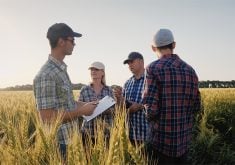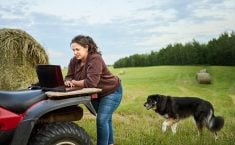According to Agriculture Canada the total value of farmland and buildings in Canada amounted to $427.9 billion in 2016.
In the same year, the total value of farm machinery and equipment owned and leased by farm operators added another $53.9 billion to the asset base.
The fastest-growing age group in the farm population was operators aged 55 to 64 years. This cohort represented about half of all farmers in Canada, according to the 2011 Census of Agriculture, which rose again in the 2016 census.
One can only assume that they probably own the greater share of farm assets and are likely ready to transfer them within the next 10 years. Even if we use the 50 percent ratio to determine their asset value based on age, that represents approximately $245 billion in assets that are about to change hands.
Read Also

Proactive approach best bet with looming catastrophes
The Pan-Canadian Action Plan on African swine fever has been developed to avoid the worst case scenario — a total loss ofmarket access.
The problem, and hence the looming crisis, is that only 4.9 percent of sole proprietorship farmers (about half of all farms) in that age group have asset succession plans — including wills — while family and non-family farm corporations fare somewhat better at 16.3 percent, but are still dismally low.
Having an estate plan that includes a will is critical to having your assets distributed as you wished through the hands of your chosen executor after your death. Without a will, the courts may appoint someone to liquidate or distribute your assets in a manner you might never have intended.
The executer identified in your will also have increased ability to follow your wishes while taking advantage of various strategies to minimize taxes and maximize proceeds for distribution. For instance, leaving your farm assets to your spouse at your adjusted cost base has virtually no tax implications, and capital gains taxes are deferred until the eventual sale of the property or death of your spouse.
Alternatively, any capital gains exemption you may have available may be used to offset applicable capital gains on qualified farm property if the assets are transferred at fair market value. This strategy allows you to take advantage of two capital gains exemptions and resets the adjusted cost base to the current fair market value.
There is a more complicated manner of transferring your property to your spouse through a testamentary spousal trust that delivers its own set of benefits, but the process should be incorporated in your will only with the assistance of expert legal and financial advice.
A will allows you to designate other beneficiaries, including children or other individuals, although the latter choice may result in the deemed disposal of qualified farm property and trigger capital gains on your final tax return.
If several children are involved, it may be wise to bequeath farm property to children with knowledge of and interest in farming while providing non-farm assets to the other children.
Assets transferred through a will are likely to be subject to a modest tax called probate. These vary in amount by province but your legal and tax adviser will be able to identify the applicable probate tax involved.
Grant Diamond is a tax analyst in Saskatoon, SK., with FBC, a company that specializes in farm tax. Contact: fbc@fbc.ca or 800-265-1002.
















